
Manufacturer's Specifications:
Drivers: Midrange/tweeter and woofer ribbons.
Frequency Response: Below 30 Hz to 20 kHz.
Crossover: 6 dB per octave, passive; nominal frequency, 600 Hz.
Output Level: 115 dB SPL peak at 4 meters.
Nominal Impedance: 4 ohms.
Dimensions: 26 in. W x 58 in. H x 3 in. D (66 cm x 142.2 cm x 76.2 cm).
Weight: 95 lbs. (43.1 kg).
Price: $3,735 per pair ($3,840 in western states).
Company Address: 35 York Industrial Park, Randolph, Mass. 02368, USA.
The Apogee Duetta Signature is very different from most loudspeakers; it is a two-way, ribbon-type system in the form of a tall, shallow monolith. The design of ribbon speakers has been neglected for many years, although the original idea can be traced back at least to the Blatthaller design of the 1930s (see Loudspeakers by N. W. McLachlan, Dover Publications, New York, pages 222 and 223). The Blatthaller design consisted of a diaphragm of corrugated aluminum strips which ran between rows of magnets located on each side. In the Apogee, however, each diaphragm is made of one corrugated aluminum sheet, with integral conductors, and the rows of magnets are located at the back and sides of the conductors. In either design, the signal is applied to the diaphragm, which acts like the voice-coil in a more conventional moving-coil loudspeaker driver. The signal interacts with the magnets' field and the diaphragm moves back and forth, producing the sound output.
There are a number of reasons why the design of full-range ribbon dipole loudspeakers has received little attention until recently; chief among them have been the cost of magnets (many are required) and the lack of imagination and/or audaciousness on the part of the management of most loudspeaker companies. (Most loudspeaker design engineers would find such a challenge very interesting.) The original Blatthaller used electromagnets rather than permanent magnets because they could provide enough flux to make a reasonably efficient device; the permanent magnets of that era were very weak compared to those available today. Probably the most interesting feature of the ribbon loudspeaker is that the voice-coil is also the diaphragm which radiates the sound. Because of the visual similarity between ribbon and electrostatic loudspeakers, it is easy to mistake one for the other, since both have flat, membrane-type diaphragms. This superficial resemblance can be resolved upon closer examination because, for one thing, a large ribbon loudspeaker's diaphragm is usually covered with conductive strips which traverse back and forth to form a continuous path for the electrical signal from the driving amplifier; an electrostatic diaphragm is one continuous piece. Also, the diaphragm of the Apogee is corrugated to allow for greater motion, whereas the electrostatic diaphragm must be flat. The ribbon diaphragm, which is also the voice-coil, presents a low-impedance, mostly resistive load to the amplifier, which is usually perfectly acceptable.
Conversely, an electrostatic loudspeaker presents a very high, mostly capacitive load impedance to the driving amplifier. This requires that a special high-impedance output amplifier be used or that a transformer be part of the loudspeaker to present a more reasonable load to an ordinary amplifier of low output impedance.
Apogee Acoustics was started in 1981 by Leo Spiegel (a retired scientist who had worked for Honeywell and Northrop on such things as inertial navigation systems) and an associate (who has since left). Spiegel decided it would be interesting to apply some of his vast technical expertise to the design of a full-range ribbon speaker system. The first loudspeaker he produced was the Apogee Full-Range Ribbon Speaker, since discontinued, which was very well received. This led to other s-stem designs. Apogee now offers four models, of which the Duetta Signature is the subject of this report.
Any notion that a thin panel loudspeaker would probably be light in weight and easy to handle was quickly dispelled when I unpacked the Duetta Signature systems (with help, I might add). They weighed about 100 pounds each. Attaching the metal brackets, which act as feet, was made much easier because my son-in-law, who was pressed into service, steadied and controlled the weight of the panels while I installed them. (Thanks, Terry. I may need your help again!) The systems I received had a gray marbleized finish, but the speakers ale available in a variety of finishes; this is also an indication that Apogee intends to fly in the face of the usual dictum to "keep everything simple" from a marketing standpoint. It is as if they are saying, "We have a loudspeaker that sounds great. What may we do to help you make it look great in your listening room?" I think this is a wonderful attitude, .and I applaud Apogee for their efforts.
The panels are very study and are rounded at the outside edges and around the two openings for the bass and mid/ high drivers. This helps to eliminate diffraction of the sound and enhances the appearance as well. The grille cloth is a very open screen of gray woven plastic, which makes the diaphragms clearly visible. The back is covered with a very open-weave black cloth. When set up for listening, with the long, narrow mid/high drivers to the inside, the pair of Apogee Duetta Signatures seemed to dominate the room.
This is because, far best sound, they should be out away from the rear and side walls: The Duetta is a dipole and radiates sound from the rear as well as the front.
An interesting feature d the Apogee Duetta Signatures is that, while the mid/high driver is only one-tenth of the radiating area of the bass driver, its output extends from below 200 Hz to above 2C kHz. The electrical crossover occurs at about 350 Hz, but the acoustical crossover, where the bass and mid/high drivers contribute equal acoustical outputs, is around 1 kHz. This explains why Apogee specifies the crossover as being at 600 Hz, which is a good compromise.
Because it operates so low in frequency, the mid/high panel vibration is very noticeable, and one member of my listening panel commented that "it was very exciting to see!" The directional characteristics of a loudspeaker are directly related to diaphragm dimensions, so it was an intelligent decision to roll off the bass driver early and let the mid/high driver handle most of the range.
The Duetta Signature bass driver's diaphragm is made of an integral sheet of 0.7-mil aluminum, with 82 conductive paths through which the bass signal current zigzags back and forth from top to bottom. Springs on each side of the woofer diaphragm place it under tension, to eliminate the normal tendency of a stretched membrane to snap back and forth or "oil can." The tension is carefully adjusted for each system to achieve optimum performance. The electrical connections to the diaphragm are made using a crimping technique that avoids any problems due to vibration which might arise, over time, if soldering were used; soldering to aluminum is not easy and can be unreliable.
The input connections to the Duetta Signature are gold-plated, five-way binding posts. There are separate pairs for the bass and the mid/high drivers so that either two amplifiers or separate cables from a single amplifier may be used to drive each section independently. The passive crossover inside the Duetta Signature can be bypassed to allow biamping with Apogee's $4,000 DAX dedicated active crossover. Instructions on bypassing come with the DAX. The speaker's input plate also has a three-position "Midrange/Tweeter" toggle switch, marked "High," "Low," and "Normal." The sequence may look strange, but anyone who has ever had to design a switch like this knows why the sequence is as it is; it has to be!
A pair of aluminum brackets, attached 18 inches apart, is used to hold the speaker upright. The feet are aluminum bars that have rounded ends. The bars are 12 1/2 inches long, 1 3/4 inches wide, and 1/2 inch thick and extend 2 1/2 inches to the front and 7 1/2 inches to the rear of the speaker. A vertical bar extends upward from the foot bar and attaches to the back of the loudspeaker frame. An angled bar adds extra bracing between the foot and vertical bars. The foot bars have tapped holes, front and rear, for 1 1/4-inch long, No. 18 x 5/16 Allen-head bolts. These bolts have been ground to sharp points so that they can act as secure connections to the floor, allowing the speakers to stand firmly even on thick carpets. The panels are angled back by about 2.5°, and Apogee supplies a plumb bob to aid in adjusting the bolts to achieve this desired angle.
Measurements and Listening Tests
------------------
MEASURED DATA
Size of Drivers: Bass ribbon, 46 1/2 in. long, 575 sq. in.; mid/high ribbon, 46 1/2 in. long, 55 sq. in.
Frequency Response: 30 Hz to 20 kHz, ±5 dB.
Crossover Frequency: Acoustical, 1 kHz; electrical, 350 Hz.
Low-Frequency Resonance: 36 Hz.
Sensitivity: 69 dB SPL at 1V per meter.
Efficiency: 75 dB SPL at 1 watt per meter.
Amplifier Power: Recommended, 100 watts per channel; maximum, 400 watts per channel.
Impedance: Nominal, 4 ohms; minimum, 2.8 ohms.
Distortion: Less than 2% below 90 dB SPL for the tone E1 (41.2 Hz), less than 2% below 100 dB SPL for the tone A2 (110 Hz), and less than 2% below 35 dB SPL for the tone C4 (262 Hz).
Absolute Polarity: Negative.
------------------
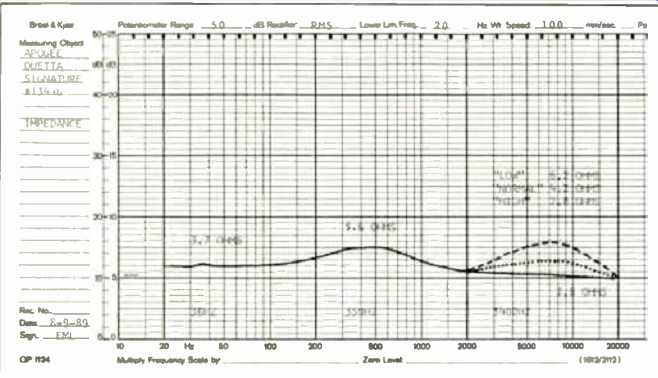
Fig. 1--Magnitude of impedance. The impedance is resistive at 36, 350, and
3400 Hz.
Impedance at high frequencies changes for different positions of the midrange/tweeter switch, as shown; all other measurements were made with this switch in the "High" position.
There is a continuing argument between those who say that the only way to describe the performance of a loudspeaker is to eschew technical measurements altogether and rely solely on subjective impressions and those who contend that a loudspeaker can be completely defined by technical measurements. Perhaps the first group really means that they have never seen anyone describe completely the subjectively perceived attributes of a loudspeaker by technical measurements alone. The second group probably means that they don't really trust the reports of those who rely solely on subjective perception and that, if the reviewers were given enough space in a publication to present all the measured data necessary to do the job, they could describe the performance of a loudspeaker completely. Perhaps I have oversimplified these arguments, but I think that I am pretty close.
The difficulty of trying to reconcile both sides cannot be overstated. Many loudspeaker reports that I have read try for the middle ground by presenting a mixture of some technical measured data and subjectively perceived impressions. However, they do not really attempt to correlate the two, except it a superficial way. I believe strongly that technical measurements can be used to explain why a component has certain definite, perceived sonic characteristics. As I have done in past reports for Audio on turntables, tonearms, and cartridges, I will try very hard to correlate comments made by the members of a listening panel with my technical measurements. Discussing certain technical measurements can be very helpful, especially with loudspeakers, because many of their sonic characteristics are definitely affected by the listening environment, their placement in that environment, and the way they react with certain amplifier and cable parameters.
Figure 1 shows the impedance versus frequency of the Duetta Signature. It is very uniform but rather low, especially at 20 kHz. When choosing a loudspeaker cable for use with the Duetta Signature, care must be taken. The cable should have as little resistance as possible, because even as little as 0.5 ohm total resistance can waste as much as 11% of the power at frequencies where the impedance is 4.0 ohms and waste 15% where the impedance is 2.8 ohms. The situation is much worse if the total cable resistance is 1.0 ohm, the power losses being 20% for a 4.0-ohm impedance and 27% for a 2.8-ohm impedance. On the plus side, the effects of cable capacitance tend to be ameliorated by the low shunt resistance of the loudspeaker. The Duetta Signature does require an amplifier capable of supplying rather high peak currents, because along with its low impedance, it is also not a very efficient loudspeaker.
Figure 2 is a Nyquist plot of the complex impedance, which shows the relationship of the "real" (resistive) and "imaginary" (reactive) components. The thing to remember when looking at this type of plot is that the resistive component dissipates or uses up the energy, while the reactive component stores it temporarily. Figure 2 shows that the impedance of the Duetta is almost purely resistive: Even though the impedance plot is circular because it has been scaled to show more detail, the vertical reactive scale has much smaller intervals. The speaker's almost purely resistive impedance means that the Duetta should not cause any problems for most amplifiers that can deliver high current, even if they have high overall loop feedback.
Figure 3 shows magnitude versus frequency (top) and phase versus frequency (bottom) for the composite output of the Duetta and the individual contributions of the bass and treble drivers. The microphone was 1 meter in front of, and in line with, the mid/high driver strip. This is the "sweet spot" for the Duetta; other measurements, which will be discussed later, also confirmed this conclusion. When the Duetta was auditioned by each listener, care was taken that at least part of the listening was done directly in line with the mid/high driver, with each speaker of the pair aimed accordingly. Although I refer to the listeners as panel members, the listening sessions were actually conducted with only one listener at a time. There was no switching to another system; the experience of the listener was the sole criterion for the comments, which were written, not verbal.
One interesting aspect of Fig. 3 is that the output of the two drivers, which are each 6 dB down from the composite curve, blend so well at the crossover point that there is no indication of the crossover at all! The large overlap in output can cause some problems off the axis of the loudspeaker system, however.

Fig. 2--Complex impedance, showing reactance and resistance vs. frequency
(in Hz). Note that the two scales are not identical; see text.

Fig. 3--One-meter on-axis frequency and phase responses, showing effects
of the two ribbons separately and together. Note that only response above
200 Hz is shown.
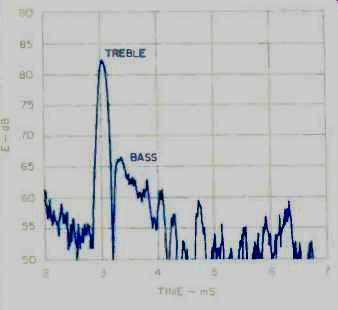
Fig. 4--Energy vs. time, with microphone in line with tweeter and 1 meter
away. Most of the energy is delivered within 1 mS. Initial output is mainly
treble, as bass energy spreads out over time, causing the cancellation notch
shown. See text.
The phase plot shows that the two drivers blend very well over a substantial range on either side of the crossover, which means that the difference in arrival time for sound produced by these two drivers is almost identical. This correlates well with the various comments by all panel members regarding the "clarity," "detail," and "analytic quality" of the Duetta Signature system.
Figure 4 shows the energy versus time with the microphone in the same position used in Fig. 3. The energy is in a tight package, spread over about 1 mS, which indicates that the Duetta produces a very coherent sound. This correlates well with listener comments about how precise the images of various instruments and voices were, even when they were recorded in very reverberant surroundings. Other measurements made showed that the initial energy from the mid/high and bass panels arrived together even though the lower frequencies, because of their longer wavelengths, were spread over a greater time period.
The 3-meter room response (Fig. 5) shows that, even at 30° to the inside of the mid/high ribbon axis, the high frequency response is excellent to about 10 kHz and holds up well to 20 kHz. This and other measurements correlated well with comments which indicated that the Duetta has excellent high-frequency performance. The drop in response at about 1.3 kHz is due to the bass panel output's delay relative to the mid/high output, which is enough to put the two at opposite polarity (180° from each other) at this frequency, causing energy cancellation. Every panel member commented that there seemed to be something missing from the sound of the Duetta systems. These ranged from "lack of body" to "something wrong with the balance of the sound." Perhaps the effect shown in Fig. 5 can be used to explain these comments, but the difference in response shown in Fig. 6, for different microphone heights, may also help explain them. There is a definite change in the balance of the sound for the two microphone heights, which were intended to show how a seated or standing listener might perceive the sound of the Duetta systems. Even though the listening sessions were conducted with the listener seated, the perception of balance is most likely affected by the total sound radiated by the loudspeaker into the room. Figure 7, a polar plot of the radiation from the Duetta loudspeaker, also has a direct bearing on these comments because the total radiated energy varies with frequency. At 800 Hz, the pattern becomes very strange. Most of the energy is radiated at the 330° angle in the front and the 210° angle toward the rear, but with the total energy reduced. This is caused by the large overlap in output from the mid/high and bass diaphragms, which are mounted side by side and produce out-of-phase energy in the range between 600 Hz and 1 kHz. The energy is exactly 180° out of phase at 800 Hz. Even at the maximum radiation angle of 330°, the level at 800 Hz is 6 dB below that of the energy at 4.8 and 15 kHz.
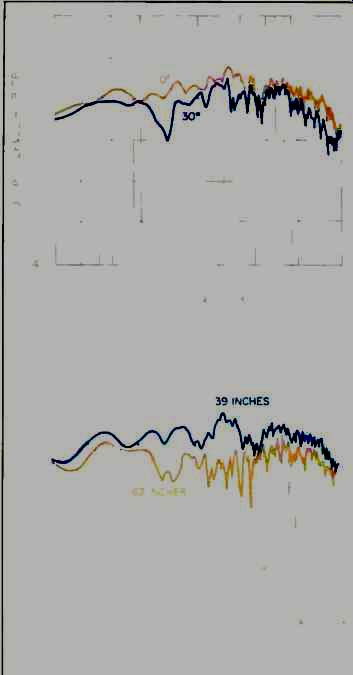
Fig. 5--Three-meter room response, measured on axis and 30° off axis.
Fig. 6--Three-meter room response at microphone heights approximating seated and standing positions of listener.
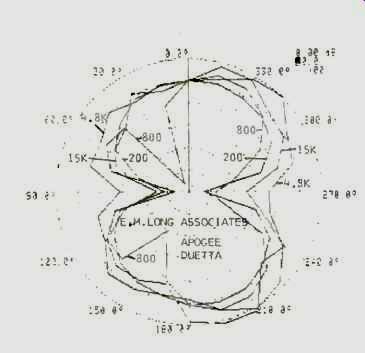
Fig. 7--Polar response of right-channel speaker in free field at 200, 800,
4800, and 15,000 Hz. The speaker is facing the top of the page, with the
mid high ribbon on the right.
Note that most of the energy is toward the right front, at 330°. These curves show relative directionality, not relative output level, as they have been normalized to their 0° (forward) values. (Scale: 6 dB per div.)
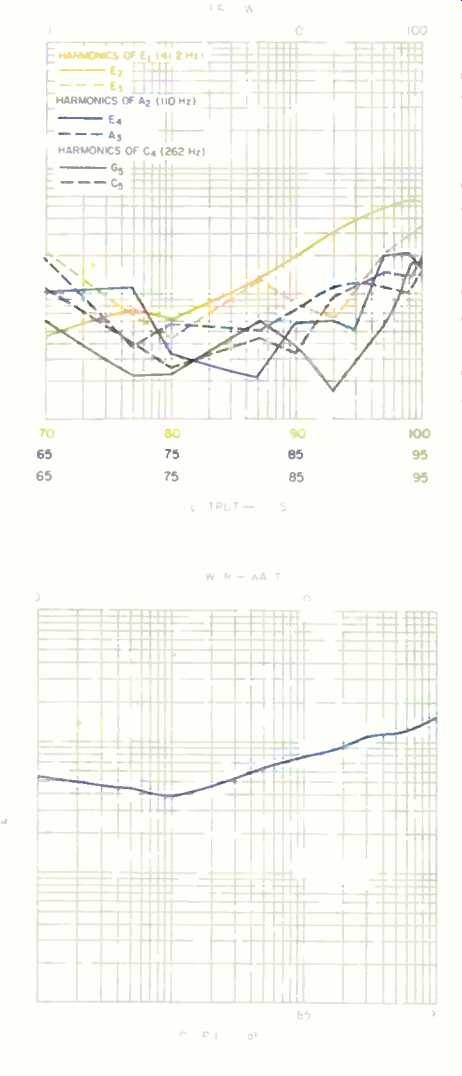
Fig. 8--Harmonic distortion for the test tones E1 (41.2 Hz), A2 (110 Hz), and
C4 (262 Hz, or middle C). Note that the bass output at 41.2 Hz is about 5
dB higher than at 110 and 262 Hz for the same input power.
Fig. 9--IM of C4 (262 Hz) caused by mixing with E1 (41.2 Hz) at equal levels.
This has to be the main reason why the sound of the Duetta was perceived to "lack body." Another reason is that the output between about 3 to 5 kHz, particularly at 4.8 kHz, is very strong. This also correlates well with the perception by some panel members that the Duetta was "very analytical" and "revealing of detail" but also very "bright" and "zippy," especially when reproducing violin and brass. The polar plot can be very useful in setting up the Duetta systems; it shows that the maximum forward radiation is at 330°, which would be angled toward a centered listener's position. This is probably why Apogee does not recommend angling the systems inward, as you might normally expect. I found that a slight angling, so that the listener was in line with the mid/ high ribbon panels, produced the best balance and detail.
When I placed absorptive panels to the rear of the Duetta, the precision and clarity were increased but the balance was made worse. All panel members reacted the same way in this respect. The best balance required that the reflecting surface be in the middle, between the Duetta systems, and about 3 to 4 feet behind them; the Duettas were also about 3 feet from the side walls. I am convinced, by my measurements and my experiments, that the Duetta systems are better suited to, and will always sound better in, large rooms than small ones.
Figures 8 and 9 show the harmonic and intermodulation distortion percentages, which are reasonably good. During the listening sessions, the sound levels were always less than 94 dB SPL, and no comments were made which could be directly correlated to the information in these Figures. None of the panel members complained of lack of bass. However, if you Ike to listen to bass-heavy music at higher levels, you might be disappointed because the distortion in the bass range can be a limitation. You will need an amplifier that can match the transparency of the Duetta as well as provide more than 100 watts per channel.
Figure 10 shows that the Duetta is capable of very good reproduction of square waves. Most loudspeaker manufacturers and reviewers don't show what a loudspeaker does to square waves because most loudspeakers don't treat these signals kindly! The square waves of Fig. 10 indicate that the Duetta does an excellent job of reproducing the fundamental and harmonics of a complex sound without messing them up. Comments by panel members about how well the Duetta reproduced the timbres of different instruments of the brass and string families, so that they were easily distinguishable, correlates well with the excellent square-wave performance.
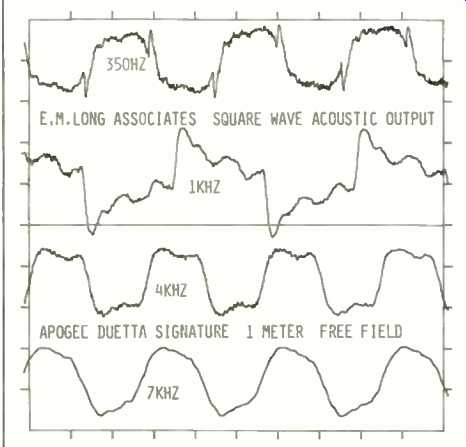
Fig. 10--Square-wave output at four frequencies, measured with microphone at
1 meter in free field: see text.
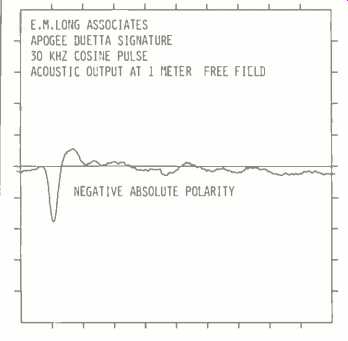
Fig. 11--Absolute polarity, measured with microphone at 1 meter in free field.
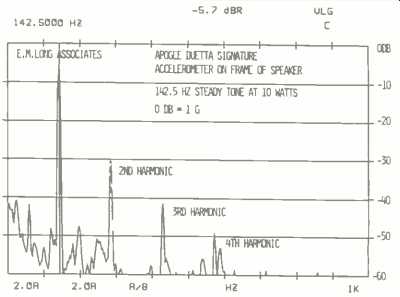
Fig. 12--Spectrum of output from frame of speaker sys-em. The output at the
142.5-Hz resonance has a force of about 0.5 G. See text.
Figure 11 shows that the absolute acoustical polarity of the Duetta is negative. This was checked before the listening sessions, and the connections were changed so that the absolute polarity of all the program material used was correct. Panel members were also asked if they could hear the difference in polarity when it was switched back and forth while listening to the Duetta. Most panel members had no trouble hearing the difference, and I rate the Duetta's coherence very high in this respect.
I haven't mentioned much about the bass response of the Duetta systems until this point because I wanted to show some things that I found very interesting. One of the most difficult tasks the designer of a dipole ribbon system faces is how to make the system produce enough bass output to match the output from the rest of the range. A ribbon system doesn't have the excursion restriction of an electrostatic, but it still has the problem of the front and rear waves cancelling each other because the baffle is so small compared to the wavelengths involved. Another problem which isn't mentioned very often is that the frame holding the bass diaphragm is subject to Newton's third law: "For every action, there is an equal and opposite reaction." The frame will try to move in the direction opposite to that of the diaphragm; if it has a large surface area, it can cancel some of the diaphragm's output! The design strategy employed by Apogee to solve this second problem is to make the frame as stiff as possible, thus moving its natural resonance well above the bass range. Figure 12 shows that the Duetta frame's resonance is at 142.5 Hz and that, at least for a continuous tone, there is significant harmonic output. Very little frame vibration occurs below this frequency, so the "action/reaction" problem is minimal. Some comments from panel members that the quality of the bass was "strange" and "hard" may be due to the harmonic output from the frame.
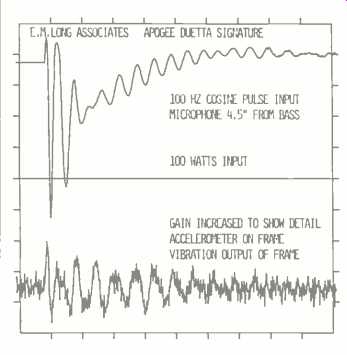
Fig. 13--Near-field acoustic output (top) and vibration from frame (bottom, and
note gain increase) for 100-Hz cosine pulse at 100 watts input; see text.
The principal means that can be used to increase the bass output of a dipole ribbon is to reduce the damping at the low-frequency diaphragm resonance. This is a side benefit from the fact that the flux density of a ribbon loudspeaker is almost always lower than that of a dynamic cone type driver. It can result in a very pronounced, extended time response, as seen in Fig. 13. The top curve shows that the output from a 100-Hz cosine pulse "rings" at the 36-Hz fundamental resonance frequency of the Duetta ribbon bass panel. The output from the frame is also shown, but it is at an extremely low level. Figure 14 shows the spectrum produced by the pulse of Fig. 13: the output from 30 to 40 Hz is about 10 to 12 dB higher than the output at 100 Hz. By producing this much output in the near field of the diaphragm (the microphone was only 4 1/2 inches from the diaphragm), the Duetta overcomes the difficulty of producing sufficient bass in the far field even when the rear wave tends to cancel the front wave. The trade-off is between the quantity and the quality of the bass. For orchestral music with big, reverberant bass drum sounds, such as in "The Roman Festival" track on the Delos CD Bravura (D/CD3070), the reaction of the panel members was that the sound was "very impressive" and "great." However, when The Sheffield Drum Record (Lab 14) was played, the comments were that the drums sounded "bloated," "not like real drums," etc. Therefore, if you like tight, solid drums, the Duetta may not be to your liking.
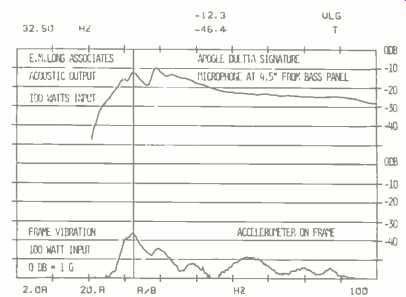
Fig. 14--Spectrum of output from pulse of Fig. 13, using same microphone and
accelerometer positions. Frequency scale runs from 0 to 100 Hz, in 10-Hz linear
increments; cursor line is at 32.5 Hz.
Conclusions
The Apogee Duetta Signature is an impressive loudspeaker. It shows signs of real ingenuity and brilliance on the part of its designer, especially considering the fact that full-range ribbon dipole loudspeakers present some really difficult problems which must be overcome. The Duetta's main weaknesses are the exaggerated output in the range from 3 to 5 kHz, the underdamped bass, and the polar radiation problems caused by interaction between the long, vertically oriented mid/high and bass diaphragms. The strong points of the Duetta Signature systems are the clarity, detail, and transparency achieved when they are positioned carefully and when the listener is in the sweet spot.
---Edward M. Long
[adapted from Audio magazine/Dec. 1989 ]
Also see:
Apogee Acoustics Scintilla Loudspeaker (Dec. 1985)
Apogee Acoustics Slant 6 Ribbon Loudspeaker (Apr. 1997)
Eminent Technology LFT-III Loudspeaker (Feb. 1989)
= = = =